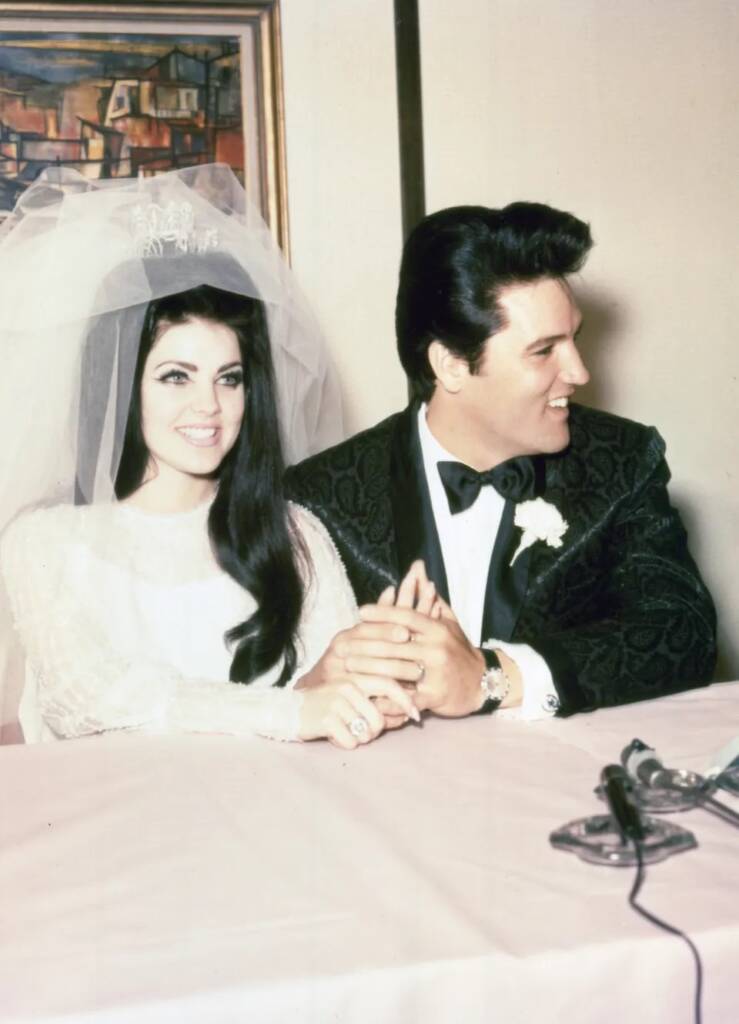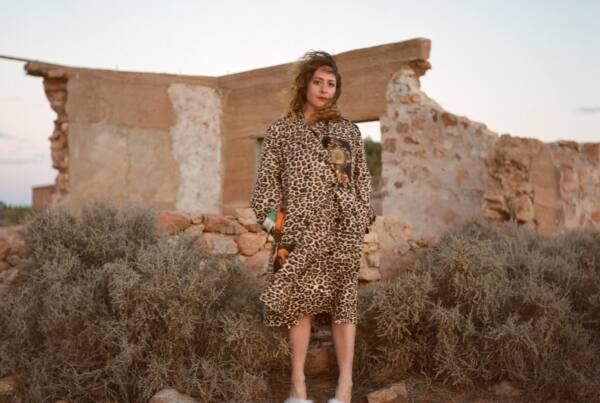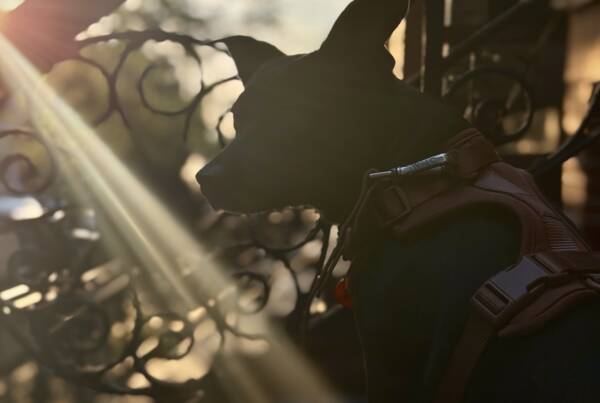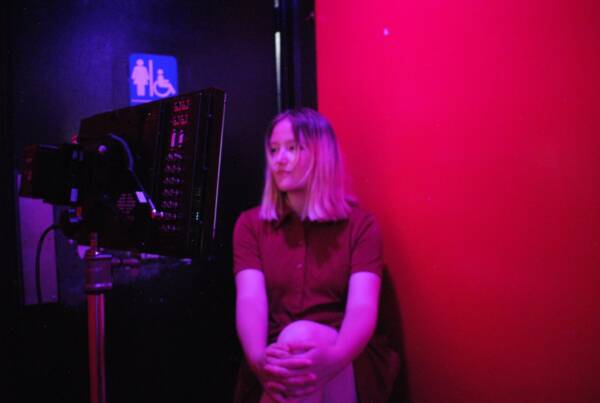Writing by Kitty Lloyd
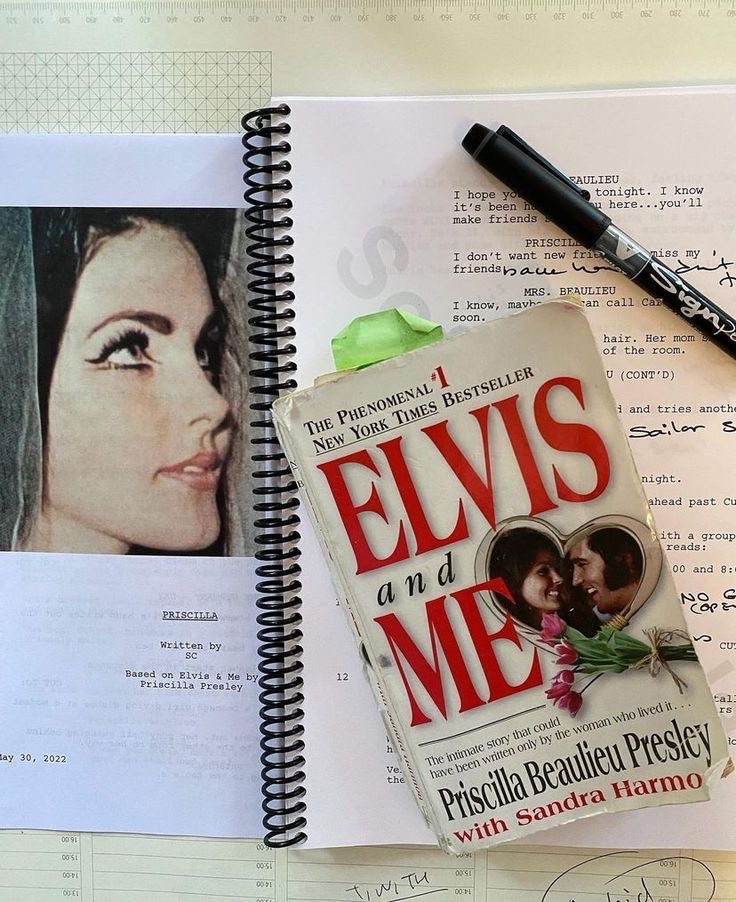 Priscilla Presley was always bound for icon status. Draped in lace with statuesque black hair and winged doe eyes, the persona of Priscilla inevitably found home in our hearts and on our mood boards. Today, she’s coveted as the coquette-carnation of the rockstar girlfriend – canonised as a saint of the Lolita aesthetic and sourced as the inspiration behind Lana Del Rey’s image.
Priscilla Presley was always bound for icon status. Draped in lace with statuesque black hair and winged doe eyes, the persona of Priscilla inevitably found home in our hearts and on our mood boards. Today, she’s coveted as the coquette-carnation of the rockstar girlfriend – canonised as a saint of the Lolita aesthetic and sourced as the inspiration behind Lana Del Rey’s image.
Upon meeting Elvis in her parent’s house at only fourteen years of age, Priscilla Presley (formerly Beaulieu) was injected into a chaotic life of fame. As his status as a cultural icon soared, Priscilla’s did too. The twenty-something bride has since been a source of intrigue, envy and awe. What’s more intoxicating than the girl famously loved by one of the world’s most loved men?
Misunderstood girls the world over rejoiced when it was announced last year that Sofia Coppola’s next film would be an adaption of Priscilla’s 1985 biography, Elvis & Me. The memoir follows Priscilla and Elvis’ relationship and its complicated and volatile nature – a subject Priscilla has continued to allude to in interviews since.
With the film released in such quick succession to the Baz Luhrman’s epic, Priscilla (2023) and Elvis (2022) can’t help but be understood as in conversation with one another. Lurhman’s depiction maintained the sympathetic myth of the legendary entertainer. Coppola, however, pushes us to more meaningfully grapple with the wrath of powerful, talented men. And having been cast as Nepo-baby, director muse and rockstar gf on several occasions, she’s fit to do the honours. In her latest film, Coppola once again deals with the dynamics of relationships in the context of power – but this time considers it from the perspective of an artist’s muse.
Just like in its modern form of the “manic pixie dream girl”, The Muse’s identity is undeniably poetic. She embodies enough wondrous inspiration to provoke world-changing art. How could one not fall in love with this archetype – defined by always perfect hair, Patricia Field-esc outfits and the seductive cool of ambivalence. Like most of us, I understood the impact of The Muse before I ever fully experienced the existence of nonmale artists. I met The Muse in the gift store of a Picasso retrospective: the Girl with the Ponytail. As nameless as she was fascinating.
Sylvette David (Picasso’s muse) and her intrigue wasn’t about the attention or love she received, but merely, her sheer proximity to power.
In theory, The Muse embodies such an exceptional form of femininity that mainstream culture cannot help but lax its systems of exclusion. From as early as Hipparchia, women have been granted access to powerful spaces in exchange for their femininity. It’s an asterisk of the heterosexual contract: if you perform femininity just right, patriarchy might bend its rules for its own gain.
These cultural figures experience a proximity to power that the peers of her gender would never know. She has seen the great symposiums, the debates of Cafe de Flore and the sound booths of Abbey Road. Permitted into these arenas – but rarely invited to participate.
This unique relationship type has been enshrined in shiny aesthetics – denoted by the internet as the power couple. However, biographies prove time and time again that the transfer of femininity was never a trade. Just like Coppola reminds us in her latest film, the lived experiences of this person and The Muse we remember could not sit more at odds.
Priscilla having the reins to her side of the story is an exception to The Muse but her experience is no way exceptionary. Jane Birken endured the violent wrath of Serge Gainsbourg. Héloïse was beaten and then institutionalised by Peter Abelard. Zelda Fitzgerald was famously locked in a burning house by husband, Scott F. Fitzgerald. Courtney Love remains a junkie whilst Kurt Cobain remains a genius. Elisabeth of Bohemia’s theory gets titled Correspondence with Decartes instead of Philosophy. The lives of many muses are defined across a spectrum of abuse and exploitation, and yet nearly each one of these “power couples” live on today in a TikTok slideshow. We glamourise carnage in an attempt to find ourselves in culture.
While Priscilla might stand alongside the King at iconic pop culture moments – the eye make up, the outfits and the hair that we obsess over represent him. Not Priscilla or her agency. What we lust after wasn’t a product of Priscilla’s keen eye, but a prop to the feminine performance she was prescribed.
In the case of Priscilla, Coppola dares to still portray the eponymous teenager’s world of iconic aesthetics but without a heavy handed devil’s advocate to our cultural memory. Priscilla’s girlhood, agency and nuance sits alongside the complex and fraught world of her relationship – as one doesn’t negate the other. Coppola doesn’t switch Priscilla from the category of saint to martyr – but begs us to understand her as more.
For the TikTok generation that clings to the allure of the rockstar-GF and coquette babydolls, Priscilla is set to challenge and complicate these romanticised identities. By retelling this love story trope in Priscilla’s own words, maybe The Muse has finally left the building.

